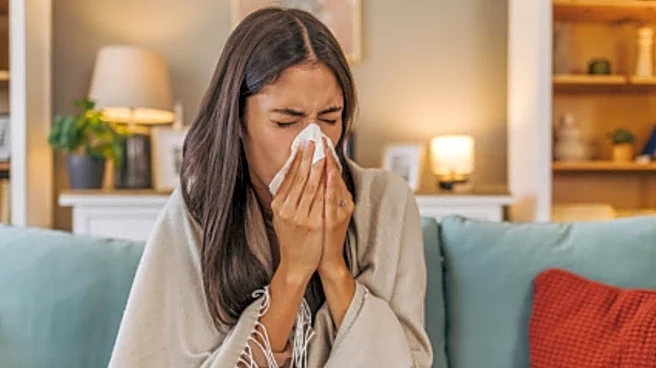October generally signals the end of the monsoon and the start of balmy, warm days before winter sets in. However, the past few days have seen unpredictable rises and dips in temperature across several parts of India, leading to a sharp increase in viral infections, allergies, and respiratory illnesses. This fluctuation has already taken a hefty toll on public health, as doctors report a noticeable rise in cases of asthma, bronchitis, and sinusitis, particularly among children, the elderly, and individuals with pre-existing health conditions.
Dr. Shubham Sharma, Consultant, Pulmonology, Narayana Hospital, Jaipur, and Dr. Piyush Goel, Senior Consultant, Pulmonology, Narayana Hospital, Gurugram, share all you need to know.
Experts say that infections
are appearing earlier and lasting longer than usual because of unstable weather, high pollution levels, and fewer people wearing face masks. These constant shifts in temperature place additional stress on the body’s immune system, leaving many residents more susceptible to infections.
Doctors also note that cases of upper respiratory tract infections, allergic rhinitis, and sinus congestion have become more common over the past few weeks. The mixture of warm days and cool nights, combined with exposure to pollutants, creates ideal conditions for viral and allergic triggers to thrive.
Common Symptoms on the Rise
From sore throats and mild fevers to fatigue, headaches, and persistent coughs, symptoms typical of seasonal viral infections are on the rise. In many cases, patients complain of prolonged recovery periods and recurring symptoms, even after initial improvement.
Why Weather and Pollution Make It Worse
Fluctuating temperatures cause blood vessels in the respiratory tract to constrict and expand repeatedly, which can irritate the airways. Dust and other pollutants make the respiratory system more inflamed, worsening asthma and allergic bronchitis. Doctors say that exposure to smog and poor air quality also weakens the immune system, making it harder for the body to fight off infections.
Steps to Stay Safe
To protect yourself from the current wave of seasonal illnesses, medical experts suggest taking a few simple steps:
Dress according to the weather. Wear warm, comfortable clothes and layer them to block the breeze. Avoid sudden exposure to cold air, especially during early mornings and late nights.
Drink plenty of fluids and eat healthy foods. Warm soups and herbal teas help keep you hydrated, while a diet rich in fruits and vegetables especially those high in vitamin C — boosts your immune system.
Use air purifiers wisely. Keep indoor air clean and well-ventilated to reduce allergens and pollutants.
Don’t self-medicate. If you have chronic respiratory problems, see a doctor if your symptoms last more than a couple of days or become severe.
Maintain hygiene. Wash hands frequently and avoid close contact with infected individuals to prevent viral transmission. Normalize wearing a mask if you are unwell.
Seasonal changes are inevitable, but their impact can be minimized through awareness and timely precautions. As the weather continues to fluctuate, doctors urge people to pay attention to early symptoms, follow medical advice, and protect vulnerable family members from exposure.
With the right precautions and a little extra care, you can enjoy the rest of October by staying healthy and reducing the spread of infections during this unpredictable season.



/images/ppid_a911dc6a-image-176033205119880163.webp)




/images/ppid_59c68470-image-176034252649571719.webp)





/images/ppid_59c68470-image-176034756708043571.webp)

/images/ppid_a911dc6a-image-176030403529289768.webp)
